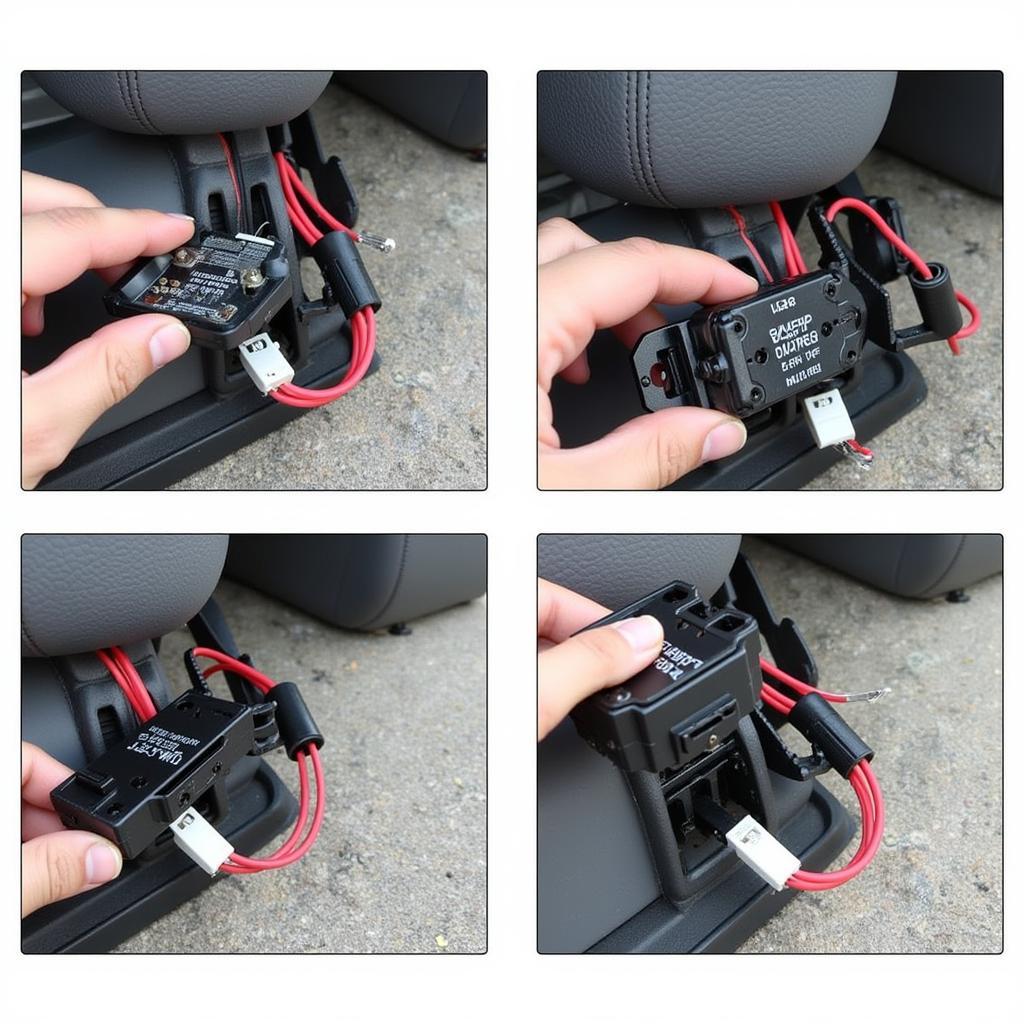Seat belt warning delete is a modification that disables the audible and/or visual alerts reminding drivers and passengers to fasten their seat belts. While this might seem appealing to some, it’s crucial to understand the implications and potential dangers before considering this alteration. This article dives deep into the intricacies of seat belt warning systems, the methods used to bypass them, and the legal and safety ramifications associated with such modifications.
Understanding Seat Belt Warning Systems
Modern vehicles are equipped with sophisticated seat belt warning systems designed to enhance safety. These systems typically consist of sensors in the seats and buckles, coupled with an electronic control unit (ECU). When the ignition is on and the seat belt isn’t fastened, the system triggers an audible chime and often a visual warning on the dashboard. Some advanced systems even incorporate features like seat belt pretensioners and force limiters that work in conjunction with the airbags to optimize occupant protection in a crash.
How Seat Belt Warnings Work
The sensors detect the presence or absence of weight on the seat and the engagement of the buckle. This information is relayed to the ECU, which then activates the warning signals. The duration and intensity of these warnings can vary depending on the vehicle’s make and model. Understanding the function of these systems is key to grasping the potential risks involved in disabling them.
Methods for Seat Belt Warning Delete
There are several methods used to disable seat belt warnings, ranging from simple hardware modifications to complex software reprogramming. These include using seat belt buckle extenders, aftermarket bypass modules, and manipulating the vehicle’s software through diagnostic tools.
Hardware Modifications
Seat belt buckle extenders are readily available and simply plug into the existing buckle receptacle, tricking the system into thinking the seat belt is fastened. Aftermarket bypass modules, on the other hand, intercept the signals from the sensors and prevent them from reaching the ECU.
Software Reprogramming
More advanced techniques involve reprogramming the vehicle’s ECU using specialized diagnostic software. This method can permanently disable the warning system, making it more difficult to revert back to the original settings.
 Installing a Seat Belt Bypass Module
Installing a Seat Belt Bypass Module
Legal and Safety Implications
Before considering a seat belt warning delete, it’s vital to understand the legal and safety implications. In many jurisdictions, tampering with safety systems like seat belts is illegal and can result in fines or even invalidate your insurance coverage.
Safety Concerns
Disabling seat belt warnings significantly increases the risk of injury or death in an accident. Seat belts are proven to be the single most effective safety device in a vehicle, reducing the risk of fatal injury by up to 50%. Without the constant reminder, drivers and passengers are more likely to neglect wearing their seat belts, putting themselves at greater risk.
“Seat belts are fundamental to vehicle safety,” explains Dr. Emily Carter, automotive safety expert at the National Vehicle Safety Institute. “Disabling the warning system undermines this crucial safety measure and puts occupants at unnecessary risk.”
Legal Ramifications
The legality of seat belt warning delete varies depending on local regulations. In some areas, it’s explicitly prohibited, while in others, the laws are less clear. Regardless of the legal status, disabling safety features can have serious consequences if involved in an accident.
“Modifying safety systems can have significant legal repercussions,” advises David Miller, a leading automotive lawyer. “Not only can it lead to fines, but it can also impact insurance claims and liability in the event of a collision.”
 The Importance of Seat Belts in Car Accidents
The Importance of Seat Belts in Car Accidents
Conclusion
While seat belt warning delete might offer a temporary reprieve from annoying chimes, it comes with significant safety and legal risks. The benefits of a functioning seat belt warning system far outweigh any perceived inconvenience. Prioritizing safety by ensuring all occupants wear their seat belts is paramount. Remember, seat belts save lives.
FAQ
- Is it illegal to disable my seat belt warning? The legality varies by jurisdiction, so it’s essential to check local laws.
- Can disabling the seat belt warning affect my insurance? Yes, it can potentially invalidate your insurance coverage.
- Are there any safe alternatives to disabling the warning? No, the safest practice is to always wear your seat belt.
- How do seat belt pretensioners work? They tighten the seat belt in a crash to minimize slack and improve occupant restraint.
- What is the purpose of a seat belt force limiter? It helps to reduce the pressure on the chest during a collision, minimizing the risk of injury.
- Can I reinstall the seat belt warning system after disabling it? Depending on the method used, it might be possible to revert the changes.
- Where can I find more information about seat belt safety? The National Highway Traffic Safety Administration (NHTSA) is a great resource.

